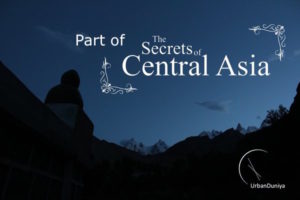 Today I’m bringing you a guest post on the Secrets of Central Asia, by my fellow travel blogger Simon Proudman. Simon’s passion lies with far flung places, so that’s what he named his blog; Far Flung Places! And fittingly, today he is writing about a place in Central Asia which I never got to; the historic city of Khiva, Uzbekistan.
Today I’m bringing you a guest post on the Secrets of Central Asia, by my fellow travel blogger Simon Proudman. Simon’s passion lies with far flung places, so that’s what he named his blog; Far Flung Places! And fittingly, today he is writing about a place in Central Asia which I never got to; the historic city of Khiva, Uzbekistan.
The hidden gems of Khiva, Uzbekistan
The statue of Al-Khorezmi stands defiant outside the city walls of Khiva. Surprisingly masses of school children have yet to put a rope around its head and drag it to the ground. For he was the founder of algebra, that confusing set of symbols and equations foisted on mathematical scholars around the world, and was born in Khiva in the 8th-century.
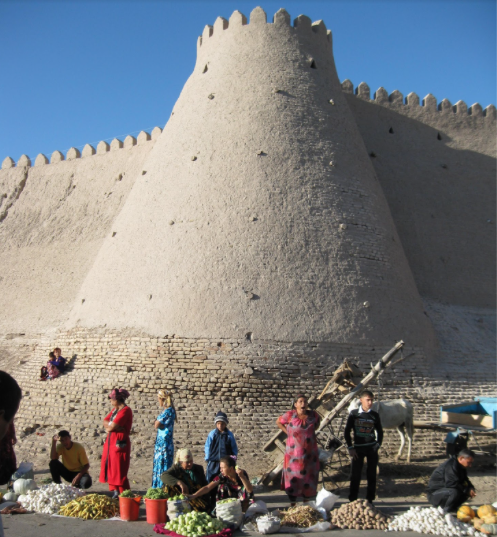
Markets outside the Khiva city walls (Image: Simon Proudman)
Al-Khorezmi was just one of the many scientists and astronomers that this powerful city state produced. It began life as an oasis between the Kyzl Kum and Kara Kum deserts. It then grew to become a major trading post on the Silk Road, building up a specialty in slave trading, which lasted until the early 20th-century.
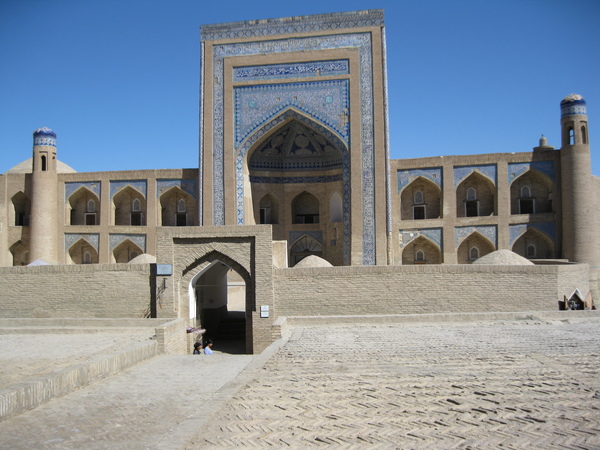
Ak Mosque, Khiva (Image: Simon Proudman)
Khiva continued to grow and developed a small empire, including much of modern day Turkmenistan, before it was overcome by Russian forces in 1873. With the formation of the Soviet Union it was included, rather strangely in Uzbekistan, despite its people being mainly Turkmen in origin, and its history intertwined with that of Turkmenistan, now a mere 5km away from the city.
Much of the original city lies intact behind the vast mudbrick city walls. Mosques, madrassah, mausoleums and minarets are located in between the tiny winding alleys and collections of small homes that still house many Khiva residents, ensuring that it is a living working city and not a museum.
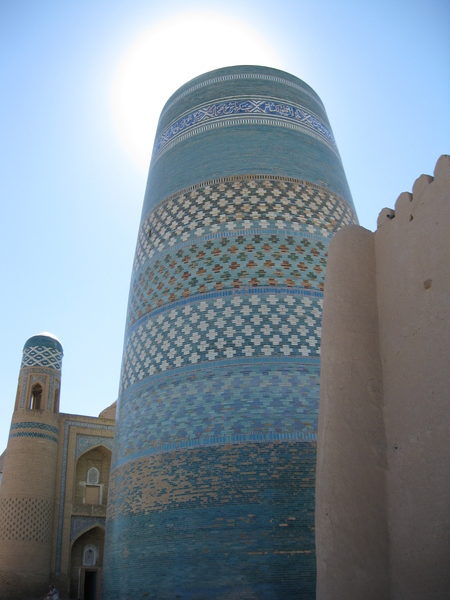
Kalta Minor, Khiva
The desert conditions have helped to keep the buildings wonderfully preserved, and wandering around early in the morning you can easily imagine that little has changed in five hundred years.
At one corner lies the Kalta Minor Minaret. Muhammed Amin Khan, the Khivan ruler in the early nineteenth century decided to build the largest Minaret in the world, in order that he would be able to see the rival city state of Bukhara 400 km away, while showing off his power and religious devotion. He died in 1855, and his successor decided that the expense was too great to complete it, and so it remains, resembling a barrel covered in beautiful glazed aquamarine tiles.
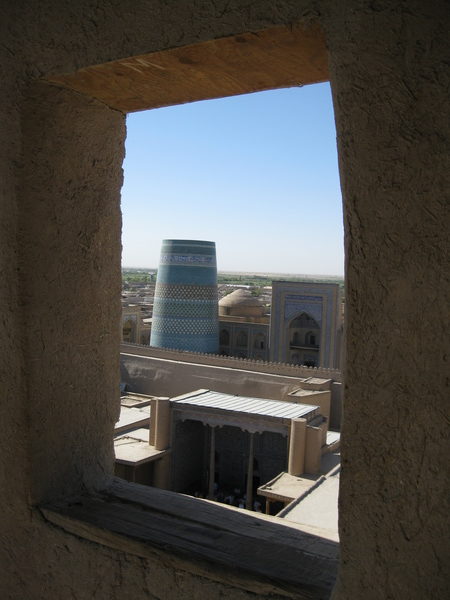
Kalta Minor, Khiva (Image: Simon Proudman)
Just outside the southern entrance of the city walls there is a colourful vegetable market every morning. Once you tire of the mountains of melons, grapes and other delights, wander behind these to where there are stalls selling kebabs and beer. One stall sells only dark stout, like a Guinness but without the frothy head, perfect to set you up for an afternoon nap before exploring the city in the cool of the evening.

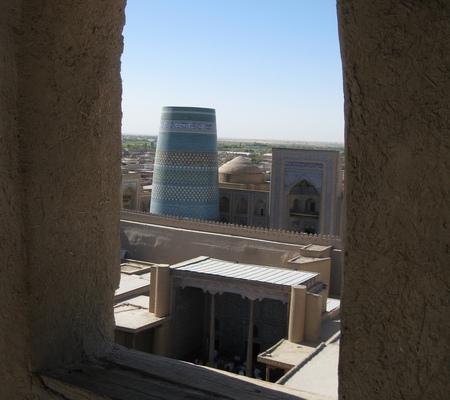



didnt make it as far as Khiva when I was there. It (unsurprisingly) reminds me of Bukhara. wonderful buildings.
Great architecture, right? I wish I had gone there too!!
Great guest post, Tim! Keep up the great work.
Thanks Agness, and thanks to Simon too! 😀